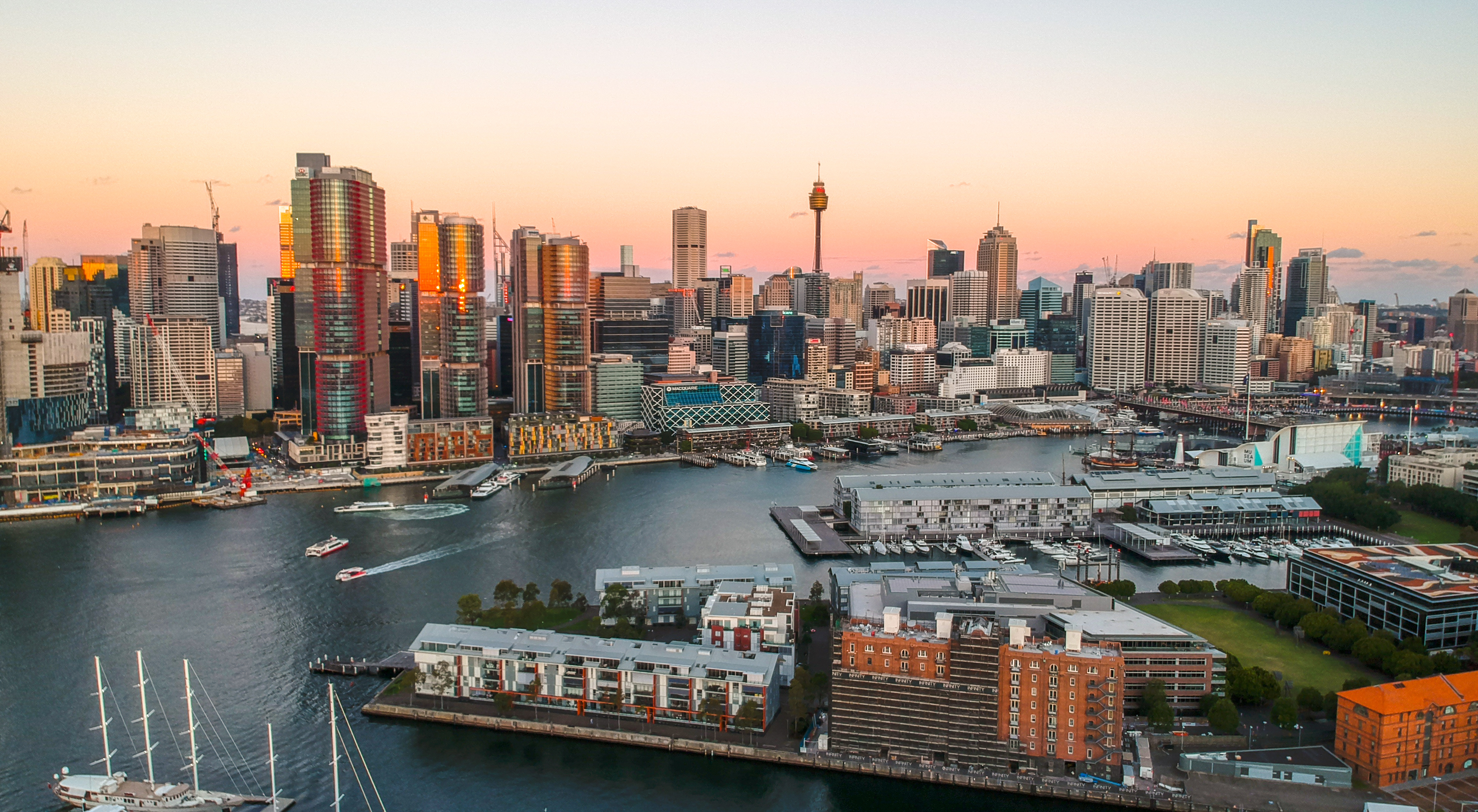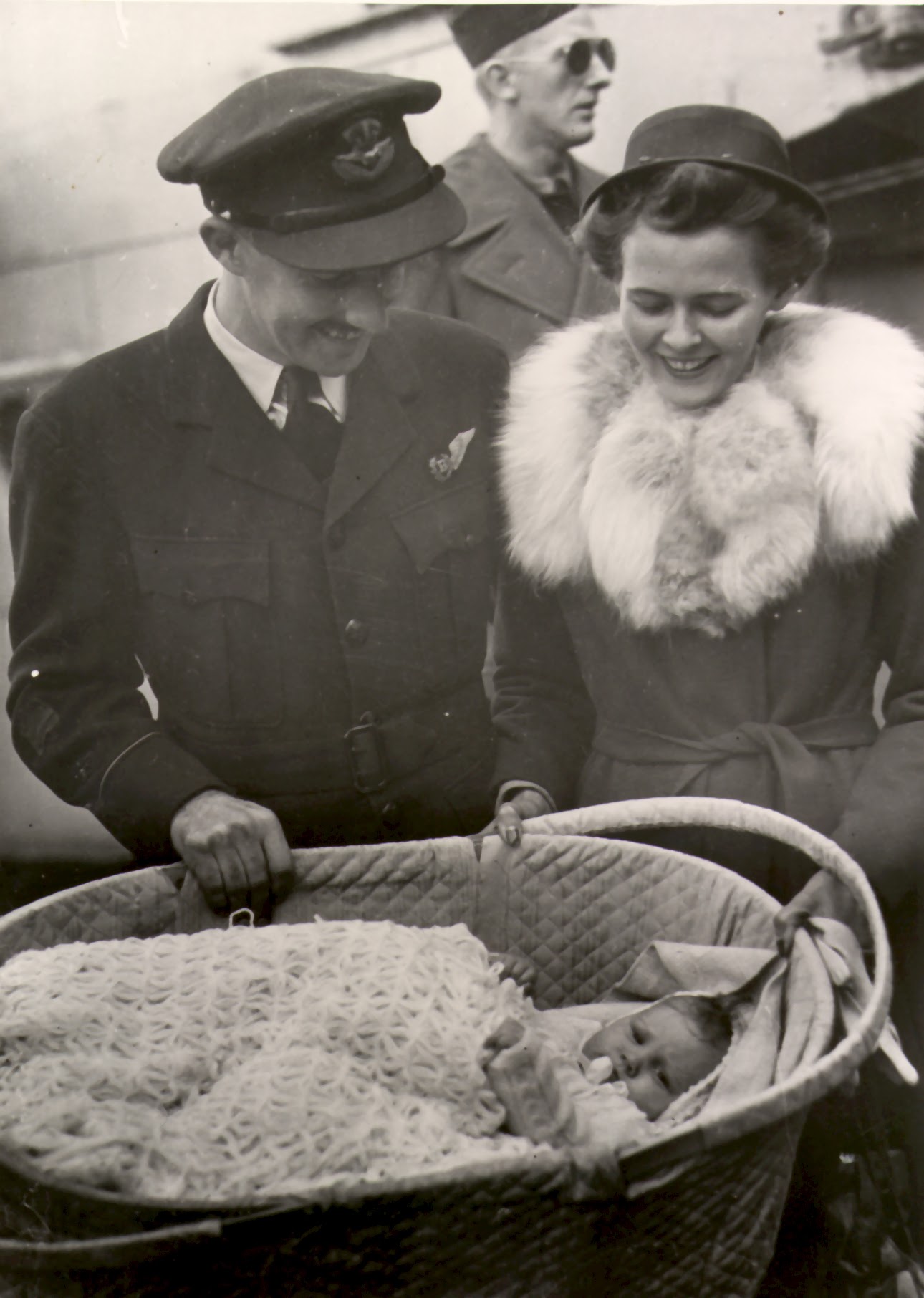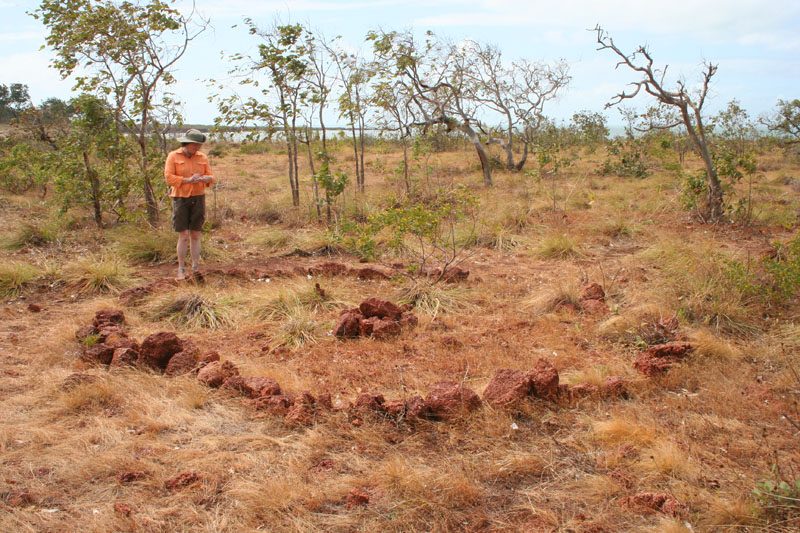|
Australian National Maritime Museum
The Australian National Maritime Museum (ANMM) is a federally operated maritime museum in Darling Harbour, Sydney. After considering the idea of establishing a maritime museum, the federal government announced that a national maritime museum would be constructed at Darling Harbour, tied into the New South Wales state government's redevelopment of the area for the Australian bicentenary in 1988. The museum building was designed by Philip Cox, and although an opening date of 1988 was initially set, construction delays, cost overruns, and disagreements between the state and federal governments over funding responsibility pushed the opening to 1991. One of six museums directly operated by the federal government, the ANMM is the only one located outside of the Australian Capital Territory. The museum is structured around seven main galleries, focusing on the relationships between Indigenous Australians and the sea, the navigation of Australian waters, travel to Australia by sea and t ... [...More Info...] [...Related Items...] OR: [Wikipedia] [Google] [Baidu] |
Darling Harbour
Darling Harbour is a harbour adjacent to the city centre of Sydney, New South Wales, Australia that is made up of a large recreational and pedestrian precinct that is situated on western outskirts of the Sydney central business district. Originally named Long Cove, the locality extends northwards from Chinatown, along both sides of Cockle Bay to King Street Wharf on the east, and to the suburb of Pyrmont on the west. Cockle Bay is just one of the waterways that makes up Darling Harbour, which opens north into the much larger Port Jackson. The precinct and its immediate surroundings are administered independently of the local government area of the City of Sydney, by Property NSW. History Darling Harbour is named after Lieutenant-General Ralph Darling, who was Governor of New South Wales from 1825 to 1831. The area was originally known as Long Cove, but was generally referred to as Cockle Bay until 1826 when Governor Darling renamed it after himself. The name Cockle Bay ... [...More Info...] [...Related Items...] OR: [Wikipedia] [Google] [Baidu] |
Duyfken
''Duyfken'' (; Little Dove), also in the form ''Duifje'' or spelled ''Duifken'' or ''Duijfken'', was a small ship built in the Dutch Republic. She was a fast, lightly armed ship probably intended for shallow water, small valuable cargoes, bringing messages, sending provisions, or privateering. The tonnage of ''Duyfken'' has been given as 25-30 ''lasten'' (50-60 tons). In 1606, during a voyage of discovery from Bantam (Banten), Java, captained by Willem Janszoon, she encountered the Australian mainland. Janszoon is credited with the first authenticated European landing on Australia. In 1608, the ship was damaged beyond repair. A reproduction of ''Duyfken'' was built in Australia and launched in 1999. Voyages In 1596, a ship named ''Duyfken'' sailed in the first expedition to Bantam, the crew was captured by the islanders on Pulau Enggano. On 23 April 1601, ''Duyfken'' sailed from Texel as ''jacht'', or scout, under skipper Willem Cornelisz Schouten to the Spice Islands. Aft ... [...More Info...] [...Related Items...] OR: [Wikipedia] [Google] [Baidu] |
War Bride
War brides are women who married military personnel from other countries in times of war or during military occupations, a practice that occurred in great frequency during World War I and World War II. Among the largest and best documented examples of this were the marriages between American servicemen and German women which took place after World War II. By 1949, over 20,000 German war brides had emigrated to the United States. Furthermore, it is estimated that there are "15,000 Australian women who married American servicemen based in Australia during World War II and moved to the US to be with their husbands". Allied servicemen also married many women in other countries where they were stationed at the end of the war, including France, Italy, Luxembourg, the Philippines, Japan and China. This also occurred in Korea and Vietnam with the later wars in those countries involving US troops and other anticommunist soldiers. As many as 100,000 GI war brides left the United Kingd ... [...More Info...] [...Related Items...] OR: [Wikipedia] [Google] [Baidu] |
Immigration To Australia
The Australian continent was first settled when ancestors of Indigenous Australians arrived via the islands of Maritime Southeast Asia and New Guinea over 50,000 years ago. European colonisation began in 1788 with the establishment of a British Empire, British penal colony in New South Wales. Beginning in 1901, Australia maintained the White Australia policy for much of the 20th century, which forbade the entrance in Australia of people of non-European ethnic origins. Following World War II, the policy was gradually relaxed, and was abolished entirely by 1973. Since 1945, more than 7 million people have settled in Australia. Between 1788 and the mid-20th century, the vast majority of settlers and immigrants came from the Anglo-Celtic Australians, British Isles (principally English Australians, England, Irish Australians, Ireland and Scottish Australians, Scotland), although there was significant immigration from Chinese Australians, China and German Australians, Germany du ... [...More Info...] [...Related Items...] OR: [Wikipedia] [Google] [Baidu] |
Mulka Project
Yirrkala is a small community in East Arnhem Region, Northern Territory, Australia, southeast of the large mining town of Nhulunbuy, on the Gove Peninsula in Arnhem Land. Its population comprises predominantly Aboriginal Australians of the Yolngu people, and it is also home to a number of Mission Aviation Fellowship pilots and engineers based in Arnhem Land, providing air transport services. In the , Yirrkala had a population of 809 people. History There has been an Aboriginal community at Yirrkala throughout recorded history, but the community increased enormously in size when Yirrkala mission was founded in 1935. Land rights Yirrkala played a pivotal role in the development of the relationship between Indigenous and non-Indigenous Australians when the document Bark Petition was created at Yirrkala in 1963 and sent to the Federal Government to protest at the Prime Minister's announcement that a parcel of their land was to be sold to a bauxite mining company. Altho ... [...More Info...] [...Related Items...] OR: [Wikipedia] [Google] [Baidu] |
Indigenous Australians
Indigenous Australians or Australian First Nations are people with familial heritage from, and membership in, the ethnic groups that lived in Australia before British colonisation. They consist of two distinct groups: the Aboriginal peoples of the Australian mainland and Tasmania, and the Torres Strait Islander peoples from the seas between Queensland and Papua New Guinea. The term Aboriginal and Torres Strait Islander peoples or the person's specific cultural group, is often preferred, though the terms First Nations of Australia, First Peoples of Australia and First Australians are also increasingly common; 812,728 people self-identified as being of Aboriginal and/or Torres Strait Islander origin in the 2021 Australian Census, representing 3.2% of the total population of Australia. Of these indigenous Australians, 91.4% identified as Aboriginal; 4.2% identified as Torres Strait Islander; while 4.4% identified with both groups. [...More Info...] [...Related Items...] OR: [Wikipedia] [Google] [Baidu] |
Deep Time
Deep time is a term introduced and applied by John McPhee to the concept of geologic time in his book ''Basin and Range'' (1981), parts of which originally appeared in the '' New Yorker'' magazine. The philosophical concept of geological time was developed in the 18th century by Scottish geologist James Hutton (1726–1797); his "system of the habitable Earth" was a deistic mechanism keeping the world eternally suitable for humans. The modern concept entails huge changes over the age of the Earth which has been determined to be, after a long and complex history of developments, around 4.55 billion years. Scientific concept Hutton based his view of deep time on a form of geochemistry that had developed in Scotland and Scandinavia from the 1750s onward. As mathematician John Playfair, one of Hutton's friends and colleagues in the Scottish Enlightenment, remarked upon seeing the strata of the angular unconformity at Siccar Point with Hutton and James Hall in June 17 ... [...More Info...] [...Related Items...] OR: [Wikipedia] [Google] [Baidu] |
Royal Australian Navy
The Royal Australian Navy (RAN) is the principal naval force of the Australian Defence Force (ADF). The professional head of the RAN is Chief of Navy (CN) Vice Admiral Mark Hammond AM, RAN. CN is also jointly responsible to the Minister of Defence (MINDEF) and the Chief of Defence Force (CDF). The Department of Defence as part of the Australian Public Service administers the ADF. Formed in 1901, as the Commonwealth Naval Forces (CNF), through the amalgamation of the colonial navies of Australia following the federation of Australia. Although it was originally intended for local defence, it became increasingly responsible for regional defence as the British Empire started to diminish its influence in the South Pacific. The Royal Australian Navy was initially a green-water navy, and where the Royal Navy provided a blue-water force to the Australian Squadron, which the Australian and New Zealand governments helped to fund, and that was assigned to the Australia Station. T ... [...More Info...] [...Related Items...] OR: [Wikipedia] [Google] [Baidu] |
The Sunday Times
''The Sunday Times'' is a British newspaper whose circulation makes it the largest in Britain's quality press market category. It was founded in 1821 as ''The New Observer''. It is published by Times Newspapers Ltd, a subsidiary of News UK, which is owned by News Corp. Times Newspapers also publishes ''The Times''. The two papers were founded independently and have been under common ownership since 1966. They were bought by News International in 1981. ''The Sunday Times'' has a circulation of just over 650,000, which exceeds that of its main rivals, including ''The'' ''Sunday Telegraph'' and ''The'' ''Observer'', combined. While some other national newspapers moved to a tabloid format in the early 2000s, ''The Sunday Times'' has retained the larger broadsheet format and has said that it would continue to do so. As of December 2019, it sells 75% more copies than its sister paper, ''The Times'', which is published from Monday to Saturday. The paper publishes ''The Sunday ... [...More Info...] [...Related Items...] OR: [Wikipedia] [Google] [Baidu] |
Neville Wran
Neville Kenneth Wran, (11 October 1926 – 20 April 2014) was an Australian politician who was the Premier of New South Wales from 1976 to 1986. He was the national president of the Australian Labor Party (ALP) from 1980 to 1986 and chairman of both the Lionel Murphy Foundation and the Commonwealth Scientific and Industrial Research Organisation (CSIRO) from 1986 to 1991. Early years Wran was born in the Sydney suburb of Paddington, the eighth and last child of Joseph Wran and his wife Lillian (née Langley). He was educated at Nicholson Street Public School, Balmain, Fort Street Boys High and the University of Sydney, where he was a member of the Liberal Club, and from which he gained a Bachelor of Laws in 1948. He was admitted as a solicitor in 1951, called to the Bar in 1957, and became a Queen's Counsel in 1968. His great-grandfather, the eminent High Victorian architectural sculptor, Thomas Vallance Wran (1832-1891), whose carvings can be seen on the Martin Place front ... [...More Info...] [...Related Items...] OR: [Wikipedia] [Google] [Baidu] |
Questacon
Questacon – The National Science and Technology Centre is an interactive science communication facility in Canberra, Australia. It is a museum with more than 200 interactive exhibits relating to science and technology. It has many science programs that are intended to inspire the children of Australia to love science. Complementing the main museum, Questacon Science Circus is an extensive science outreach program. Each year, the Science Circus engages with more than 100,000 people, travels 25,000 kilometers, runs professional development courses for 600 teachers, and visits about 30 remote aboriginal communities as well as hospitals, nursing homes, and special schools. History Questacon is an interactive science centre that began as a project of the Australian National University (ANU), in spare space at the Ainslie Public School in Canberra. It opened with 15 exhibits and was staffed entirely by volunteers and by ANU physics lecturer Professor Mike Gore AM, it inspired ... [...More Info...] [...Related Items...] OR: [Wikipedia] [Google] [Baidu] |
National Portrait Gallery (Australia)
The National Portrait Gallery (NGPA) in Canberra is a public art gallery containing portraits of prominent Australians. It was established in 1998 and moved to its present building on King Edward Terrace in December 2008. History In the early 1900s, the painter Tom Roberts was the first to propose that Australia should have a national portrait gallery, but it was not until the 1990s that the possibility began to take shape. The 1992 exhibition ''Uncommon Australians'' – developed by the gallery's founding patrons, Gordon and Marilyn Darling – was shown in Canberra and toured to four state galleries, igniting the idea of a national portrait gallery. In 1994, under the management of the National Library of Australia, the gallery's first exhibition was launched in Old Parliament House. It was a further four years before the appointment of Andrew Sayers as inaugural Director signalled the establishment of the National Portrait Gallery as an institution in its own right, w ... [...More Info...] [...Related Items...] OR: [Wikipedia] [Google] [Baidu] |






Neville_Wrans_childhood_home.jpg)